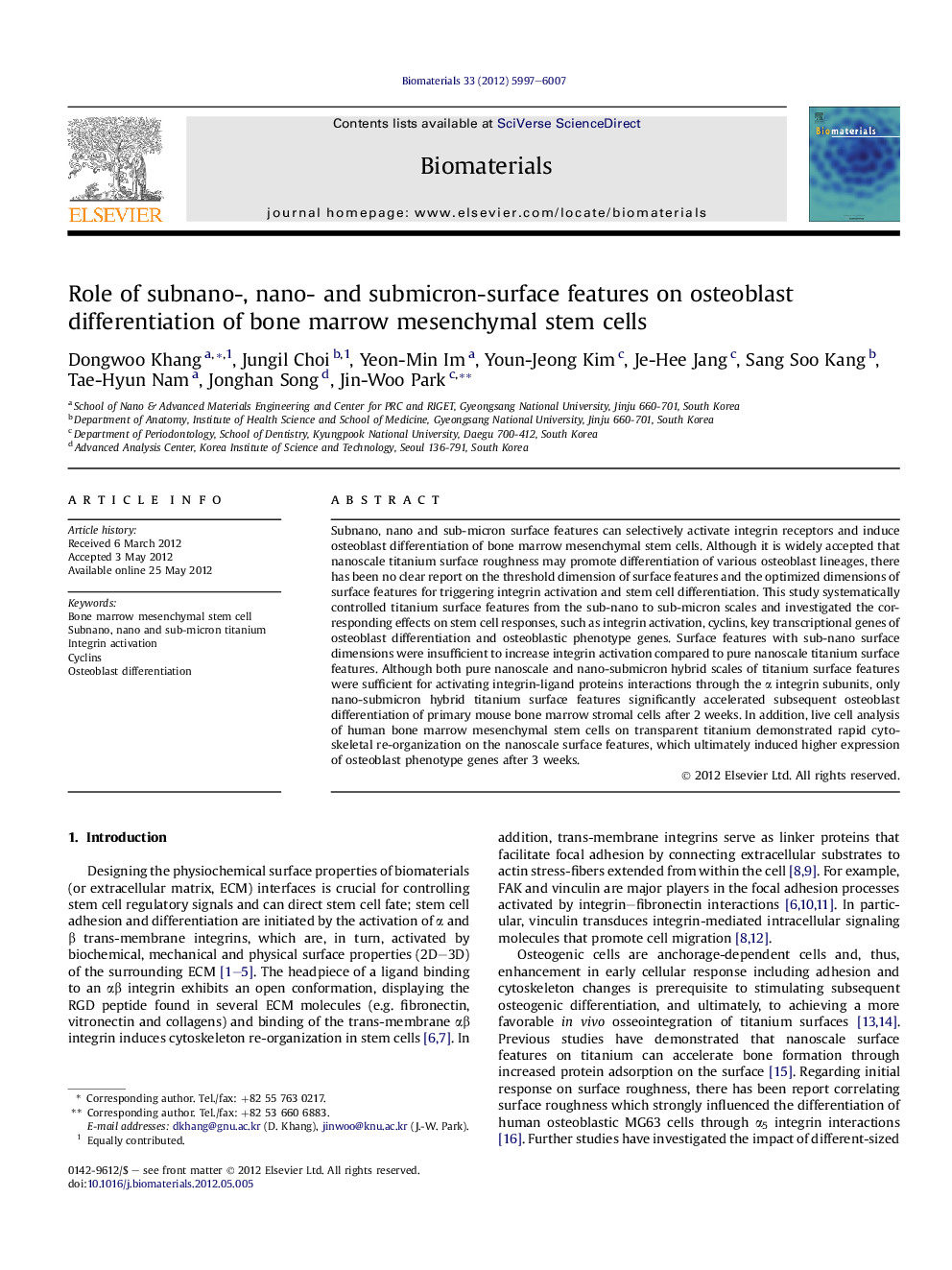| Article ID | Journal | Published Year | Pages | File Type |
|---|---|---|---|---|
| 6699 | Biomaterials | 2012 | 11 Pages |
Subnano, nano and sub-micron surface features can selectively activate integrin receptors and induce osteoblast differentiation of bone marrow mesenchymal stem cells. Although it is widely accepted that nanoscale titanium surface roughness may promote differentiation of various osteoblast lineages, there has been no clear report on the threshold dimension of surface features and the optimized dimensions of surface features for triggering integrin activation and stem cell differentiation. This study systematically controlled titanium surface features from the sub-nano to sub-micron scales and investigated the corresponding effects on stem cell responses, such as integrin activation, cyclins, key transcriptional genes of osteoblast differentiation and osteoblastic phenotype genes. Surface features with sub-nano surface dimensions were insufficient to increase integrin activation compared to pure nanoscale titanium surface features. Although both pure nanoscale and nano-submicron hybrid scales of titanium surface features were sufficient for activating integrin-ligand proteins interactions through the α integrin subunits, only nano-submicron hybrid titanium surface features significantly accelerated subsequent osteoblast differentiation of primary mouse bone marrow stromal cells after 2 weeks. In addition, live cell analysis of human bone marrow mesenchymal stem cells on transparent titanium demonstrated rapid cytoskeletal re-organization on the nanoscale surface features, which ultimately induced higher expression of osteoblast phenotype genes after 3 weeks.
